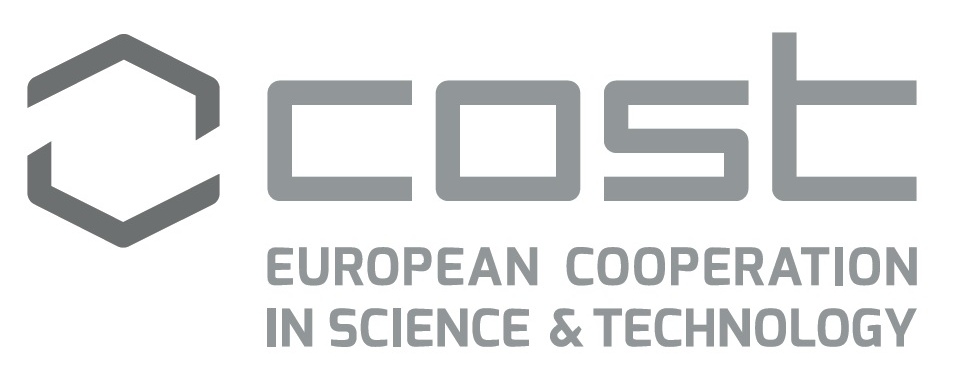Trace metal metabolism in plants -
PLANTMETALS

Working groups of PLANTMETALS

Interactions
between WPs in the PLANTMETALS Action. (1) Metal
solubilising microorganisms in nature; (2) Metal loading
of the active centres / cofactors of metalloproteins;
(3) Interactions between siderophores mediating metal
uptake, metal solubilising microorganisms and plant
systemic responses to microbes; (4) Metal detoxification
pathways / Metabolic processes affected by metal levels
in the environment; (5) Modification of metal
accumulation in crops by changing metal transporter
expression; (6) Microbial inoculants for metal nutrition
/ Crop biofortification; (7) Improved metal uptake from
soil and delivery to sink organs; (8) Metal toxicity by
non-functional substitution of active centres / metal
cofactors in metalloproteins. WG5-6 are made up of
members of WGs 1-4. WG5-6 members will therefore be
automatically present at the activities of the
scientific WGs while they will ensure the dissemination
and IP objectives
WG
|
Description
|
| 1 Metal transport |
Pathways of TMs from the soil and
through the plant. WG1 will identify the
limiting factors in the uptake of plant
physiologically active TMs from the rhizosphere
and limit the uptake or the transfer to edible
parts of toxic non-essential TMs WG1 will
determine the chemical form (speciation) of TMs in
each compartment. WG 1 will study crop plants and
the use of hyperaccumulators and identify key
nodes to improve/limit the uptake and accumulation
of essential/non-essential TMs. WG1 will study
interactions between TMs (antagonistic or
synergistic effects). Leader: Prof. Sebastien Thomine <Sebastien.THOMINE@i2bc.paris-saclay.fr>, deputy leader: Prof. Ana Assuncao <agla@plen.ku.dk> |
| 2 Metalloproteins |
Metalloproteins important for TM
homeostasis, metalloenzymes. WG2 will
identify metalloproteins important for TM use
efficiency. WG2 will study interaction of the
proteins (other than transporters) with a TM:
substrate affinity, regulation of activity,
mechanism of function. Leader: Prof. Eva Freisinger <freisinger@chem.uzh.ch>, deputy leader: Prof. Moshe Sagi <gizi@bgu.ac.il> |
| 3 Environment |
Responses of plant TM metabolism to
the environment. TM deficiency, TM toxicity,
interactions with beneficial microorganisms and
pathogens. WG3 will identify targets of both
stress conditions and mechanisms, from the initial
target to the whole- plant response. The initial
targets can be lack or non-functional replacement
of metal centres in metalloproteins, but also
direct or indirect interactions with nucleic acids
and metabolites. WG3 will reveal how beneficial
microorganisms and pathogens interact with the
metal metabolism of plants. Such interactions may,
for example, involve changes in the uptake and
intra-plant distribution of metals, enhanced or
diminished expression or activity of
metalloproteins. Leader: Dr. Manuel Gonzalez-Guerrero <manuel.gonzalez@upm.es>, deputy leader: Dr. Marek Vaculik <marek.vaculik@uniba.sk> |
| 4 Agronomy |
Agronomic aspects of TM
homeostasis. WG4 aims to conduct studies to
contribute to better nutritional quality of food
crops by using targeted fertilisation and
agricultural management also in consideration of
the new EU regulation on fertilisers, and to
characterise crop plant response to low and excess
application of TMs by employing physiological
assays and analytical tools, which will be
developed in WG1-3. WG4 will evaluate how
micronutrient fertilisers are absorbed (after
foliar vs. soil application, added in organic or
mineral forms), how microorganisms and fungi can
be used to improve plant TM nutrition (through a
better use of soil metals), how TMs are
transported within crop plants and how their
localisation and speciation changes in this
process. Finally, workshops / symposia will be
organised for farmers associations and industrial
stakeholders dealing with targeted breeding,
fertilisation and micronutrient foliar fertiliser
production. This will be done in the last year of
the Action, to facilitate the transfer of the
knowledge gained from the COST Action to the
stakeholders. Leader: Prof. Philip White <Philip.White@hutton.ac.uk>, deputy leader: Dr. Valerie Bert <Valerie.BERT@ineris.fr> |
| 5 Dissemination |
Dissemination. WG5 will be
focused on how to best target the results from
this Action to the different stakeholders. WG5
will be responsible for preparing the press
releases to news outlets, update the Action’s
social media accounts, and support the efforts at
the national front. Moreover, WG5 will organise
training sessions on writing skills to target
research journals, farmer bulletins, and press
releases. In addition, WG5 will coordinate any
joint project by groups within the consortium to
maximise group interactions, avoid overlaps and
redundancy of research efforts, and increase
success rates. Leader: Prof. Ute Kraemer <Ute.Kraemer@ruhr-uni-bochum.de>, deputy leader: Prof. Alexander Lux <alexander.lux@uniba.sk> |
| 6 IPP |
Intellectual property protection.
It is expected that a number of the results
obtained within the PLANTMETALS Action will have
an impact on the private sector. WG6 will
coordinate all the IP protection efforts,
promoting them whenever possible in collaboration
with the universities involved – (which usually
have their own IP department). In addition, to
maximise this output, WG6 will organise a training
session on IP protection for the younger
participants and promote meetings with the private
sector to ensure the exploitation of the key
results of the Action. Leader: Dr. Martin Trtilek <martin@psi.cz>, deputy leader: Prof. Mark Aarts <mark.aarts@wur.nl> |
designed
by Hendrik
Küpper, last modified 13 March 2021

